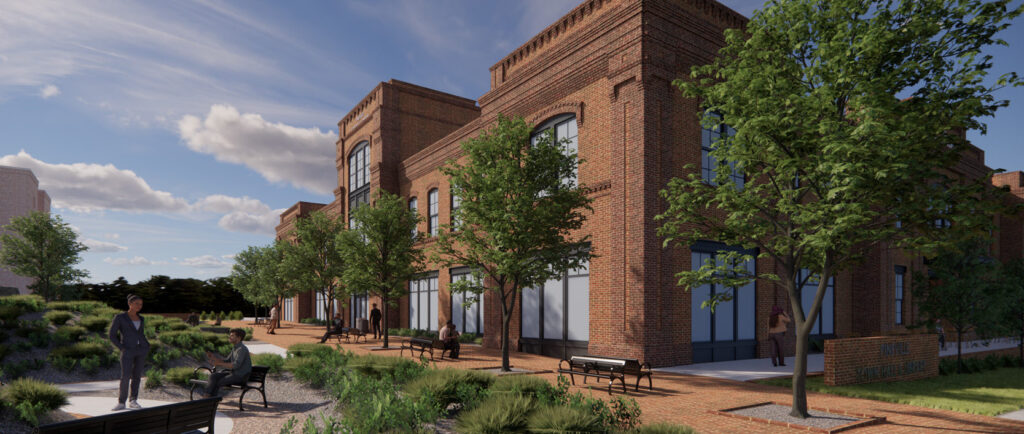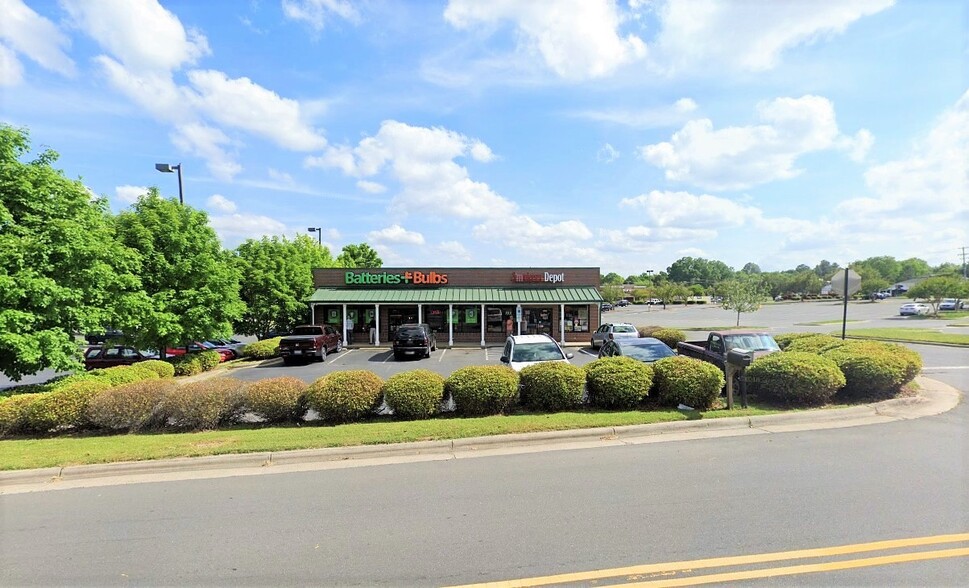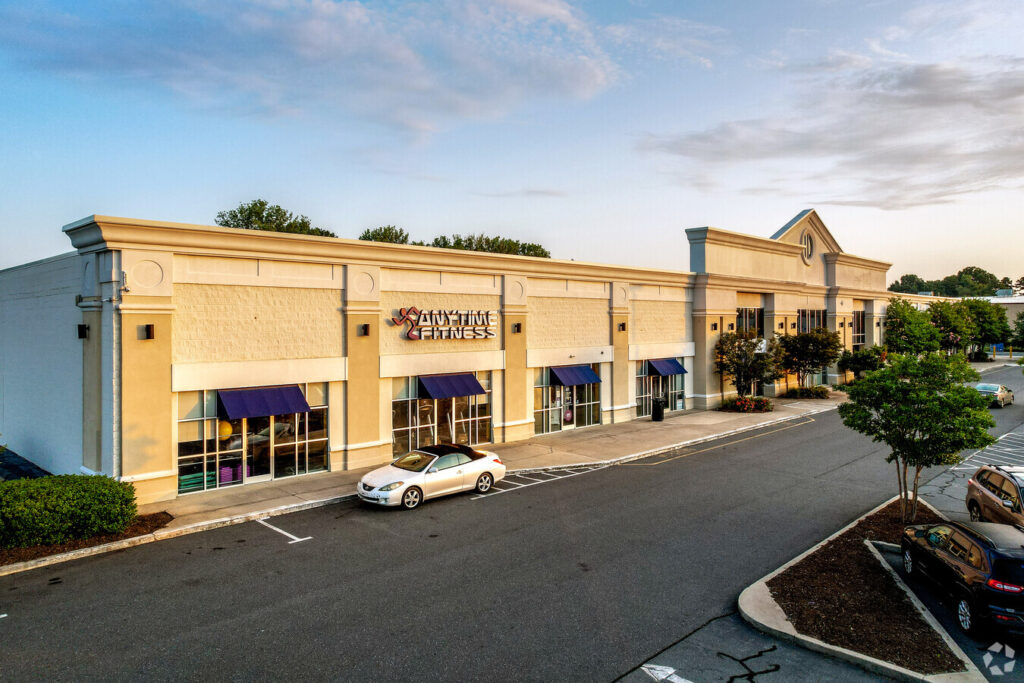pineville, Nc
Located just south of the Charlotte city center, the town of Pineville sits on the border of North and South Carolina.
Pineville, like many of Charlotte’s suburbs, has seen tremendous growth in the past two decades. If your Pineville homeowners association is looking for new management, look no further than William Douglas Property Management. Dating from the days when it was a sleepy outlying community, we have extensive experience working with the residents of Pineville. This decades’-long experience has resulted in unparalleled knowledge of the community as it continues to grow.
About Pineville
Pineville, North Carolina, or the Town of Pineville, is located in Mecklenburg County. Pineville is a suburb and bedroom community of Charlotte, North Carolina. Since the opening of Interstate 485, and North Carolina Highway 51, and South Boulevard, Pineville’s population has drastically increased in the last thirty years.
Pineville was incorporated as a town by the North Carolina General Assembly on February 28, 1873. The population of Pineville in 1900, per the U.S. Census, was 585, and by the 2020 U.S. Census, the population had grown to 10,602. Pineville, per the 2010 U.S. Census, had a land area of 6.62 square miles.
Pineville’s name originated from the vast number of pine trees that covered the community’s landscape. Settlers of European ancestry first began arriving in the future Pineville area around 1740. The genesis of what would become Pineville crossroads of two Native American trading paths. The one main Native American path at this crossroads was known as the Great Trading Path; it was also known as the Occaneechi Path. The Great Trading Path originated at Fort Henry (Petersburg, Virginia) and concluded at a trading post that would be eventually become known as Augusta, Georgia.
The First Known Inhabitants of the Pineville Area
The Catawba Indians were the first documented inhabitants of the future Pineville, Mecklenburg County areas. The Catawba people are also known as the Issa, Essa, or Iswä; though, they are more commonly known as the Iswa (yeh is-WAH h’reh). Iswa translates in the Catawba language as “people of the river.”
Before the 1600s, there is very little written record of the Catawba Indians. The first recorded European contact with the Catawba Indians is documented by members of Spanish explorer Hernando de Soto’s expedition in 1540. The next chronicler of the Catawba people is believed to have been the Spanish explorer Juan Pardo in 1567. Pardo’s expedition is chronicled in Vandera’s narratives, and the Catawba people are referenced as the Ysa Issa (Iswa). John Lederer, a German explorer, encountered the Catawba Indians on his expedition in 1670. Lederer referred to the Catawba as the Ushery in his published work of the expedition titled The Discoveries of John Lederer, In three several Marches from Virginia, To the West of Carolina, And other parts of the Continent: Begun in March 1669 and ended in September 1670.
The Catawba-Wateree River Basin covers a large area of present-day North Carolina and South Carolina. The future Pineville area is almost located directly in the middle of the Catawba-Wateree River Basin. Archaeological evidence points to Native Americans inhabiting the lands around the Catawba-Wateree River Basin as far back as 6,000 years ago. The Catawba people believe their tribe at one time inhabited the Piedmont region of the Carolinas up into the state of Virginia.
The Catawba people have a history of being an agrarian-based society, which supported this diet with fishing and hunting. They had a highly structured society that lived within villages that were surrounded by palisades constructed of logs and tree branches. There was a large council house with an open area for village gatherings and other functions within the palisades. The palisades also contained small individual dwellings constructed of tree bark and rounded on top. These small dwellings typically housed the extended family. Sweat lodges played a large societal part in the lives of the Catawba people. It was common for each village to construct a stone circular sweat lodge within the palisades. The purpose of the palisades was to protect the village from attack by other warring Indian tribes.

Native Americans and the Catawba people have a tradition of commerce, just like most any other civilization. North Carolina and South Carolina, as well other areas inhabited by Native Americans, were crisscrossed with hundreds of trails or paths between villages and the different tribes. The Great Trading Path, and it was also known as the Occaneechi Path, originated at Fort Henry (Petersburg, Virginia), and concluded at Augusta, Georgia. The Great Trading Path was essentially a combination of many of these smaller Native American paths by European traders into one continuous primary path. This path developed into one of the most important trading routes in Virginia, North Carolina, and South Carolina.
The genesis of what would become Pineville was the crossroads of two Native American trading paths. The one main Native American path at this crossroads being the Great Trading Path. John Lawson (1674 – 1711) Surveyor General of North Carolina, in his book A New Voyage to Carolina, published in 1709, passed through the future Pineville in 1701 utilizing the Great Trading Path. The Great Trading Path was most relevant between the 1670s up until the 1710s. The relevance of the Great Trading Path declined as more colonial roads developed, and waterway transportation methods became more feasible.
The Great Trading Path during the late 1600s and early 1700s had major societal impacts on the Catawba people. The commerce and trade between the Catawba people and European traders and colonists grew exponentially during this time period. The Catawba Indians traded deerskins and other animal furs. They traded for firearms, gunpowder, knives, cloth, trinkets, and alcohol. As a result of this robust trade, the Catawba Indians became known for their trading abilities and their penchant for commerce.
Commerce, especially obtaining firearms, gave the Catawba Indians strategic advantages over other Native American tribes, such as their traditional enemies, the Cherokee Indians, and made them a more powerful tribe. This power would occasionally lead to intertribal conflicts with other Native Americans.
As the Catawba Indian population declined, the migration of European settlers began to increase. The early European settlers migrating into the future Mecklenburg County and the future Pineville area was, for the most part, Scots-Irish and German Palatine. The 1740s through the 1760s was a period of largest migration into the area. This migration, for the most part, was from Pennsylvania down the Great Wagon Road. These newly arrived settlers were mainly subsistence farmers with small farms. Some of the new arrivals had temporarily settled in the north before traveling south, while others, many times, had migrated directly south shortly after disembarking ships in Philadelphia.
The first settlers in Mecklenburg County of European descent may not be known for certain. However, one family of prominence stands out above all others for this time period, the Polk Family. The Polk Family was large, and the family members made an impact on Mecklenburg County and the future Pineville area. They were of Scots-Irish descent who had originally immigrated to Maryland in the late 1600s. With a short stay in Maryland, the Polk Family moved onto south-central Pennsylvania and then onto southern Mecklenburg County around 1740. The large Polk Family was reportedly some of the first white settlers in Mecklenburg County
While intertribal conflicts played a role in the population decline of the Catawba people, disease played a larger role. It is estimated that before the American colonization era (in the Carolina colony effectively around 1660), there were around 25,000 Catawba Indian inhabitants in the Piedmont region of the Carolinas. After European colonization, the Catawba people were devastated by European diseases such as smallpox, that the Catawbas had no built-up immunities. Regrettably, through their repeated contact with the European traders and settlers, beginning around 1680, these diseases in less than a hundred years diminished the number of Catawba Indians to about 400 by 1775. Based on the 2010 U.S. Census, the Catawba people have only rebounded to around 2,600.
In 1755, Thomas Polk built a cabin at the crossroads of two Native American trading paths in what would become Charlotte. These crossroads would become what is today Trade and Tryon streets. There is a small park there today called Thomas Polk Park.
Thomas Polk (1730 – 1794) was a colonel in the Mecklenburg County Militia and created with calling together the historic meeting of the Mecklenburgers. The Mecklenburgers were ardent supporters of the American Revolution. Thomas Polk is also known as the “The Man Who Built The Court House” and the “Man who founded Charlotte.” It is believed if it were not for the leadership and vision of Thomas Polk, Charlotte and Mecklenburg County would not be the city and county they are today.

Thomas Polk’s younger brother Ezekiel Polk (1747 – 1824) and sister-in-law Maria Wilson Polk (1746 – 1791) had a son named Samuel Polk (1772 – 1827), who was married to Jane Gracy Knox Polk (1776 – 1852). Samuel and Jane Polk’s first son, James Knox Polk (1795 – 1849), was the 11th President of the United States of America.
President James Knox Polk is Pineville’s most prominent son. Considered by many Presidential historians to be one of the more important Presidents for his accomplishments. As the President who expanded the United States from “sea to shining sea,” he entered office with five primary goals: reduce the tariff, establish an independent treasury, settle the Oregon boundary, annex Texas and California. He accomplished all five during his presidency. The United States acquired more than 50,000 square miles of western land during the Polk administration.
President Polk had pledged to serve only one term as President if elected, kept his pledge, and chose not to run for a second term. He left office suffering from exhaustion and overwork in 1849. At the age of 53, former President James Knox Polk died June 15, 1849, at his home in Nashville, Tennessee. It is believed the cause of death was cholera, and his frail overall health was a contributing factor. His death occurred just a little over three months after he left the Presidency.
James Knox Polk was born in a log cabin near the future Pineville on November 2, 1795. He was the first of ten children of Samuel and Jane Polk. In 1806, when James Polk was eleven, his family sold their 429 acres farm and moved to Maury County, Tennessee. He returned to North Carolina in January 1816 to attend the University of North Carolina at Chapel Hill. He graduated with honors in 1818 and returned to study law under attorney Felix Grundy in Nashville, Tennessee. James Polk ran for Congress from the state of Tennessee and was elected in 1825 at the age of 30. He served in Congress until 1839, when he was elected Governor of Tennessee from 1839 until 1841. He was elected President of the United States and served from 1845 until 1849.
The President James K. Polk State Historic Site is located at 12031 Lancaster Highway, Pineville, NC 28134. (704) 889-7145, https://www.jameskpolk.net/. There are period-era log cabins and a museum. While this is not the original cabin President Polk was born in, this is the original site of the cabin he was born in. The site also contains the Polk Family cemetery from the 18th and 19th centuries. There is also a nature trail and picnic area. The historical site is located close to Carolina Place Mall.
The American people reportedly viewed President Polk as distant and uncompromising. He was reportedly highly respected by those he worked with and by those who opposed him politically as a man who kept his word. President Polk has been called the “lease-known president of consequence.”
The future Pineville area remained rural as much or Mecklenburg County did over the next hundred years. Agriculture played a major role in the economy of the area for most of the 19th century. In addition to the overabundance of pine trees, there were a great many meadows. The area became known for mule trading because it allowed traders to turn their mules out to pasture in these meadows. The future Pineville was initially known as “Morrow’s Turnout” because of this mule trading attribute.
The location “Morrow’s Turnout” can be found in newspaper accounts from the 1850s through the early 1880s. Another location name of “Mount Moriah” is used for the future Pineville on train schedules for a two-year period from 1850 until 1852. After 1852, the railroad “officially” drafted the name “Pineville” for the town on their schedule of stops.

The Charlotte and South Carolina Railroad laid rail lines through Pineville in 1850 to the South Carolina State line. The railroad initially called the Pineville stop Mount Moriah, but the stop’s name was changed to Pineville in 1852. In all likelihood, the Pineville name originated from the railroad like so many other town’s names did during this era.
After 1852, the rail line was extended to Fort Mill and other stops on into Columbia, South Carolina. The line eventually operated between Charlotte, North Carolina, and Columbia, South Carolina, and ran for over 110 miles. This was the first railroad to serve Mecklenburg County, North Carolina, and York County, South Carolina. The Charlotte and South Carolina Railroad was a huge economic driver for Charlotte, Pineville, Fort Mill, and every other stop along the route.
The Charlotte and South Carolina Railroad was financed by area businessmen who required a more efficient method of moving their products to market. The completion of the Charlotte and South Carolina Railroad has been singled out as the most impactful economic event in Charlotte’s entire history and for the surrounding areas as well. The railroad’s completion brought with it expanded commerce and better opportunity for the whole region.
During Reconstruction after the American Civil War, investors flocked to the south seeking financial opportunities. Some of these investors funded railroads and other ventures. However, textile mills were the Internet companies of that era. Textile mills seemed to be going up everywhere there was a river or a strong creek to power the mill. And actually, the abundant water sources to power mills in the Catawba-Wateree River Basin and the depressed labor market of the region were ideal for the development of the textile industry. Another advantage to textile production was the overwhelming supply of cotton in the region for these mills.
Pineville became a center of agriculture and textiles in the 1880s and 1890s. Dover Yarn Mill opened in 1890, and in 1902 added a weaving department. At this time, the operation had 9,400 spindles, and 400 looms with over 200 people employed. Cone Mills later purchased Dover Yarn and operated under the Cone Mills name until the mill closed in November of 1991. This mill’s closing left over 500 people unemployed in the Pineville area.
The railroad was a boon to agriculture, especially the cultivation of cash crops such as cotton. The ability to economically ship agricultural products to new markets turned unprofitable crops into profitable crops overnight. In 1850 there were around 320 miles of rail line in North Carolina, and annual cotton production was 73,845 bales. Within ten years, 1860, the rail line had tripled to 1,065, and cotton production had almost doubled to 145,514 bales.
Textiles and agriculture continued to play a large role in the economy of Pineville into the early 20th century. The town of Pineville was becoming a center of commerce. There were ten retail stores in downtown Pineville. In the first part of the 20th century, it was common for annual cotton production and sales to equal as much as 6,000 bales. Pineville has one of the area’s first high schools in 1898. This three-teacher institution was considered one of the best in the state, according to Pineville locals.
Agriculture in the Pineville area began to decline during the Great Depression in the 1930s and never recovered to the previous levels. Of course, this trend in agriculture was seen in the entire region as manufacturing became more prevalent during the recovery after the Great Depression. The middle of the 20th century was when Pineville started to become less rural. There were still a great many farms, and agriculture was a force within the economy. However, nearby Charlotte, roughly ten miles away, was beginning to influence Pineville and the regional economy. In 1950, Pineville’s residents voted to pay to connect to the City of Charlotte’s water system.

In 1900, Pineville’s population had grown to 585. This population total is from Pineville’s very first U.S. Census, making it the third-largest municipality in Mecklenburg County. With Davidson being second largest with a population of 904, the largest by far being Charlotte city with a population of 18,091.
United States Census Historical Population
Year PinevilleCharlotte
190058518,091
1910 688 34,014
1920 650 46,338
1930 1,108 82,675
1940 1,144 100,899
1960 1,514 201.564
1970 1,948 241,420
1980 1,525 315,474
2020 10,602 874,579
2010 7,479 731,424
2000 3,449 540,828
1990 2,970 395,934
The U.S. Census population data indicates strong and consistent growth for Pineville. However, a side-by-side comparison with the City of Charlotte tells another story or a municipality with a different focus. Population growth has occurred within Charlotte for various economic reasons. Charlotte’s city leaders, in addition, have pursued aggressive annexation of unincorporated areas around Charlotte that have increased the population.
Probably the next big event for Pineville was the Carolina Place Mall that opened in 1991 with 120 stores. The mall has 1,200,000 square feet of retail space on two floors. The current anchor stores are Belk, Dick’s Sporting Goods, Golf Galaxy, Dillard’s, and JCPenney.
Concerns from long-time Pineville residents can be heard along the lines of not being able to tell where Charlotte ends and Pineville begins. This is especially the case in the last thirty years since the opening of Interstate 485 and the infrastructure of N.C. Highway 51, U.S. 21, and U.S. 521. The urban sprawl of neighboring Charlotte and Mecklenburg County as a whole has made Pineville a bedroom community for Charlotte for quite some time. It is estimated the majority of the Pineville population increase is due to residential development geared towards commuters for Charlotte businesses.
Need Association Management?
Contact Us
How to Start
The Process of Working With Us


REQUEST A PROPOSAL
Request a proposal online or call us directly.


WE WILL REVIEW YOUR CASE
Our team of highly trained professionals will review your case.


RECEIVE A CUSTOM TAILORED PLAN
We will create a customized management plan for your community.


SEAMLESS TRANSITION
We will implement a seamless management transition and integrate our tech.


SIT BACK & RELAX
Enjoy better, affordable and a more reliable, hassle-free management system.




